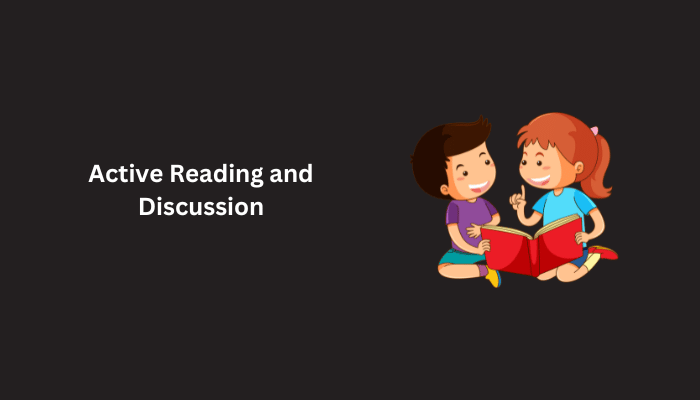When did you come across your first book? Or when is your oldest memory of reading and loving a book? Mine is from third grade when story books were introduced with moral lessons.
However, these were sometimes difficult to comprehend as a third-grader. For young learners, it is necessary to understand the text to develop a genuine interest in reading and learning and eventually develop an interest in books
The journey to becoming an avid reader begins early in life, and enhancing reading comprehension from a young age is a crucial step. It begins with reading the words, then understanding the story, the characters, and the message.
Over time, this evolves into a more complex activity of understanding themes and so on.
For young learners, it is necessary to understand the text to develop a genuine interest in reading and learning and eventually develop an interest in books.
But how to get the little ones to enjoy reading as well as comprehending without missing out on the fun?
Well, here is a list of 10 best comprehension activities for kids that can help you make your reading and comprehension lessons more interesting and fun.
-
Predicting the Story
It is the perfect activity to engage your students in the books they are about to read.
What to do: Before starting a book, show it to your students and ask for their predictions. It can be simple things based on the book cover and title. This way, the students will be more interested in the book and it will also help improve their comprehension skills.
You can also add some leading questions like — What do you think the story is about? What clues do the images give us? Encouraging discussions about the anticipated storyline sets the stage for active reading and helps kids connect with the material.
Pro Tip: Write your students’ predictions on post-its and place them on the board so you can discuss them after the book is over. It will give some space for creative thinking for the students.
-
Active Reading and Discussion

Reading comprehension activities need not be passive. Modeling how to discuss events in the story while reading shows kids how to think critically about what they're reading.
What to do: Pause and discuss what is happening in the story. You can also ask the students about what is happening in the story. Some of the questions can be like this — What just happened? Why do you think the character made that choice? How would you feel in that situation?
Pro Tip: Connecting the story with the children’s lives helps in making it more memorable as well as relatable for them.
-
Creating Mental Imagery
Reading is a lot about being able to imagine the story in a visual format to be able to enjoy it thoroughly. A powerful way to enhance comprehension is through using all five senses to create 'Mind Movies'.
What to do: Ask your students to imagine the setting, characters, and events as if they're watching a movie in their mind. Exploring the setting and characters through mental imagery brings the story to life and deepens understanding.
Pro Tip: You can also ask the students to draw their favorite characters later on. It will help with their imagination as well as their drawing skills.
-
Summarization Skills
The best way to understand the level of comprehension of your little ones, ask them to summarize the book in their own words. It will help them organize their thoughts and remember key details.
What to do: Once finished with the book, ask each student to summarize the story’s beginning, middle, and end. It will help them understand the structure of storytelling.
Pro Tip: You can ask the students to describe their favorite part of the story as well. It will make them more interested in the story.
-
Exploring Using Nonfiction
While fiction is great for introducing kids to reading, nonfiction encourages curiosity about the world around them.
What to do: Introduce and encourage your kids to learn about different topics including animals, science, history, geography, etc.
Pro tip: Make personal connections between the topics and the kids. It will help in comprehension and increase their curiosity about the real world.
-
Wordless Picture Books

As important as reading is for visual narratives, the reverse is also true. A single visual can lead to several stories made by young minds.
What to do: Instead of choosing a normal textbook, choose a wordless picture book and have your students weave a story based on visual cues. Discussing illustrations and visuals helps in developing storytelling skills and also engages young readers without the pressure of reading text.
Pro Tip: You can also make this a group activity by assigning each page to each student, and see how the story progresses with different perspectives.
-
Incorporating Rich Vocabulary
Vocabulary goes hand in hand with reading and comprehension. You can introduce your kids to new vocabulary with different books where they can learn new words based on the context.
What to do: Select books with a wide vocabulary range to introduce new words to your students in every reading session.
Pro Tip: Test their vocabulary later on based on different games. If you are looking for some interesting games to engage your students, check out the list curated by FunFox here.
-
Rearranging the Story
Stories are the best way to engage your students as they broaden their horizons to explore a new world. Interactive activities related to storytelling can make them more engaging for the kids.
What to do: Once you are done with the story, make small cards describing different situations and events that happened in the story and ask your students to rearrange them in the correct sequence.
Pro Tip: You can also make sticky notes or magnetic cards that can stick to a surface, so each student can do it for the rest of the class.
-
Teach Your Monster to Read
In the age of the internet, there are a huge number of resources available that can be leveraged to make your lessons more interactive and engaging. Some of them are reading games and apps. You can use Teach your Monster to Read to engage your students.
What to do: Teach Your Monster to Read is an interactive game where the kids are supposed to create a monster and take it with them on different reading adventures. With each level, they get to practice at least one reading activity. It will help them learn and read without making it boring.
Pro Tip: You can also make a competition out of this game by checking the monsters’ scores and reading levels at the end.
-
Sharing Family Stories
Last, but not least is the involvement of parents as kids spend most of their time at home. Sharing family stories is a great way to teach vocabulary and structure in a personal context.
What to do: Share anecdotes and your family history and encourage students to do the same.
Pro tip: You can also provide reading tips for parents and empower them to support your child's reading journey every step of the way.
The comprehension activities mentioned above work best when used in conjunction with reading materials that are suitable for your child’s age and reading level.
We understand that it may be difficult to incorporate all these activities at home. That’s why, at FunFox Readers Club, we use a mix of educational games and hands-on activities, aligned with the curriculum, to engage children at every stage. If you’d like to improve your child’s reading comprehension skills, check out our Readers Club.
Conclusion
Nurturing a child's reading comprehension skills is a journey that extends beyond the pages of a book. It's about sparking curiosity, fostering imagination, and building a strong foundation for lifelong learning. By integrating these diverse comprehension activities into your child's reading routine, you're not only enhancing their understanding of the world around them but also empowering them to become confident, critical thinkers.










